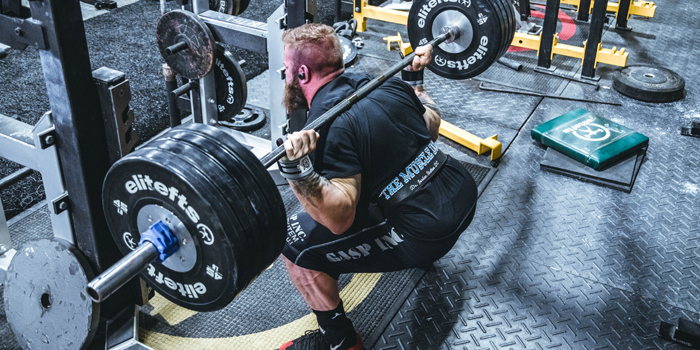
There is a bit of a misnomer, oversimplification and perhaps over-exaggeration of the usefulness and trainability of the “stretch reflex.”
For context, the stretch reflex is often cited for those lifters who utilize a ton off eccentric speed, most commonly exhibited in the squat. This is a technique most commonly referred to as “dive-bombing.”
The theory (myth) is that when you rapidly descend into the “hole” of the squat, there will be a reflexive contraction of the muscles that primarily extend the knee (quads). This will act as some sort of muscle trampoline and will allow you to reflexively contract your way to a completed rep.
There's just one problem with that theory….
It doesn’t really work.
First off, the stretch reflex is COMPLICATED and is of no obligation to make sense to you.
RECENT: Training the Lats in Dao
The elicitation of this dorsally mediated process involves a sophisticated cascade of events, which include the activation of muscle spindles, as well as the excitation of intrafusal muscle fibers, followed by extrafusal muscle fiber contraction.
Not to mention that the full reflex arch includes the activation of inhibitory interneurons in the antagonist muscle groups—in this case, the hamstrings, which are vitally important at the level of the deepest knee flexion. This is because the hamstring functions as a frontline of defense in limiting the anterior translation of the tibia on the femur, a role also held by the ACL. ⠀⠀⠀⠀⠀⠀⠀⠀⠀
REAL WORLD EXAMPLE
Have you ever gotten a physical exam and the doctor in the white coat pulls out that little hammer, looking like Andy Dufrane trying to tunnel his way out of Shawshank?
Then, he continues to lightly strike random parts of your body with said hammer, looking for small jumps in muscle contractions.
This is what’s called a deep tendon reflex exam, and it basically tests the ability of the spinal cord to relay this reflex transmission loop.
The knee jerk reflex shows the degree to which the output is capable of activating the muscle spindle.... It's a negligible output.⠀
The more likely benefit of a fast descent likely comes from the physics principle of momentum, which can be expressed by the equation of Mass x Velocity or p=mv.
So, if we’re looking at a fast descent in a squat, we are likely seeing the expression of momentum and not the utilization of a minute reflex with minimal output capabilities.
As physics can be hard to scale, you might benefit from implementing a controlled eccentric to build strength and improve position, rather than relying on a less-than-scalable principle, such as momentum. If there was a point at which speed could be beneficial in training, it’s likely during the concentric phase. To accelerate through that phase with a greater change in speed will likely have a better carryover at top-end weights when compared with the fast eccentric.
Stay strong,
Dr. Jordan Shallow D.C.











That's like... Physics' whole deal!
So, if we’re looking at a fast descent in a squat, we are likely seeing the expression of momentum and not the utilization of a minute reflex with minimal output capabilities."
That makes no sense, as the momentum is going downwards, so, if anything that's going to make pushing back up against it even harder, not easier.
I always assume it was more due to the patella tendon/ligament springing you back up, rather than the stretch reflex of the muscle - I don't think the leg muscles are stretched enough for that during a squat.